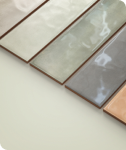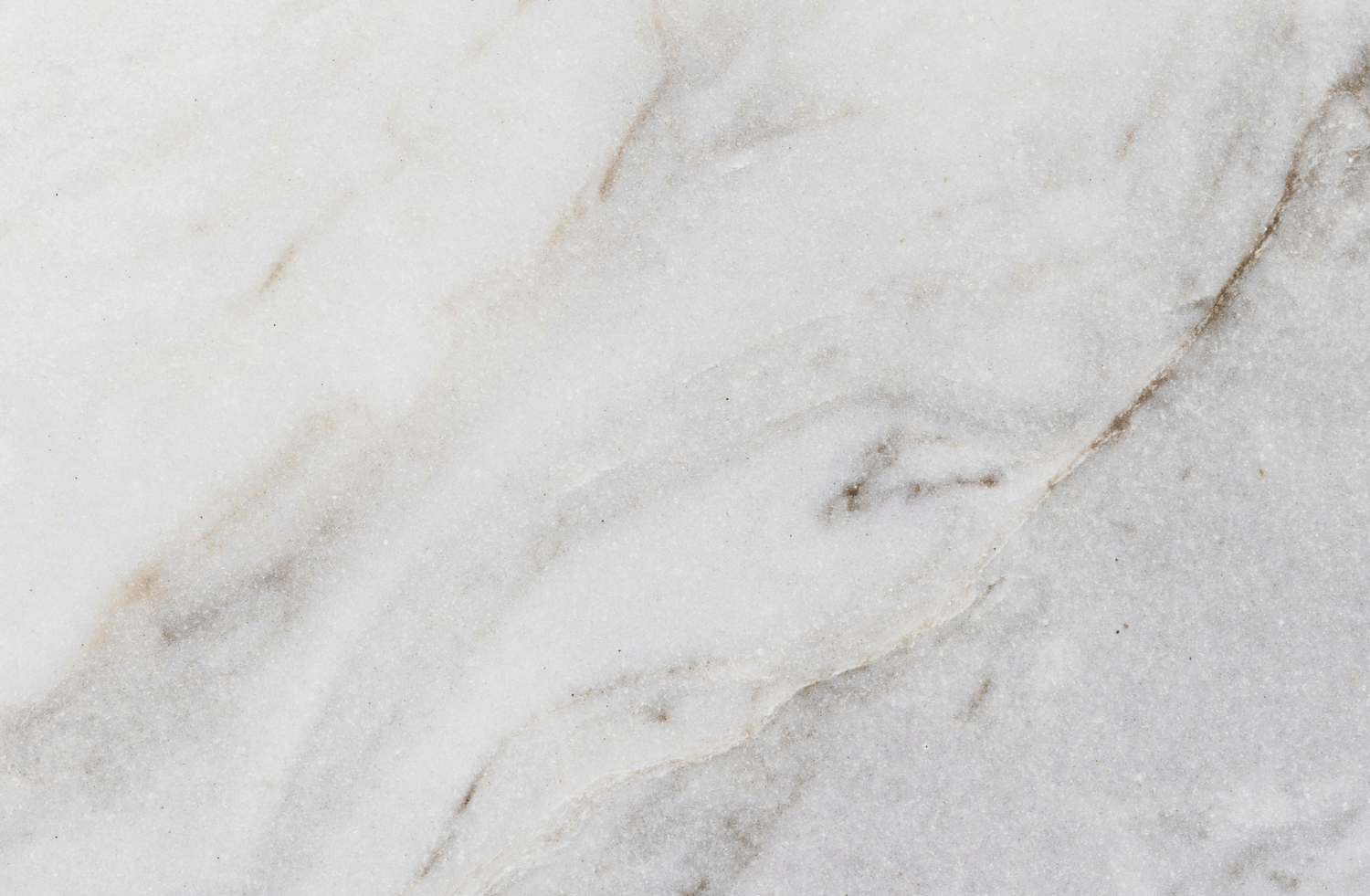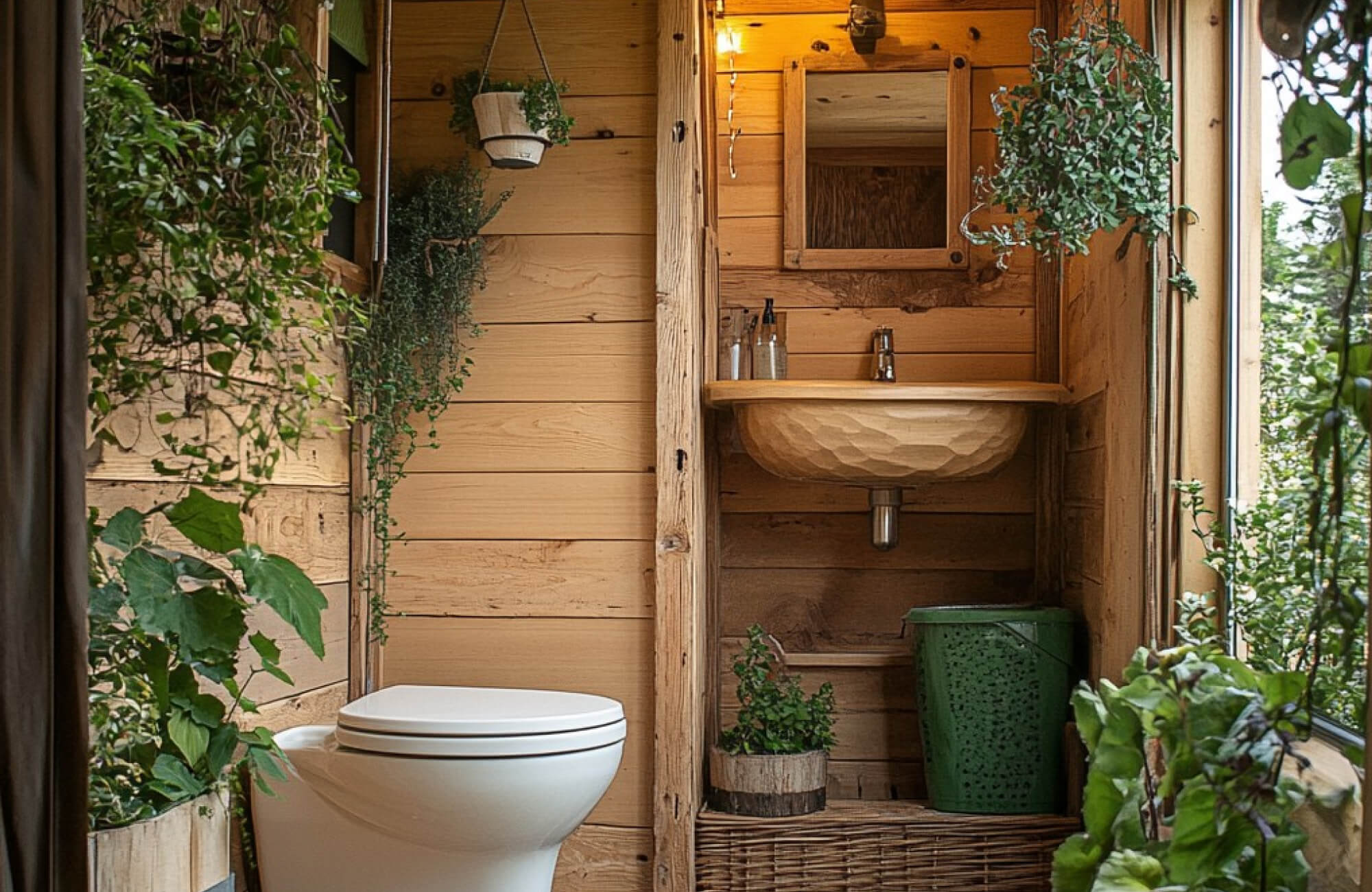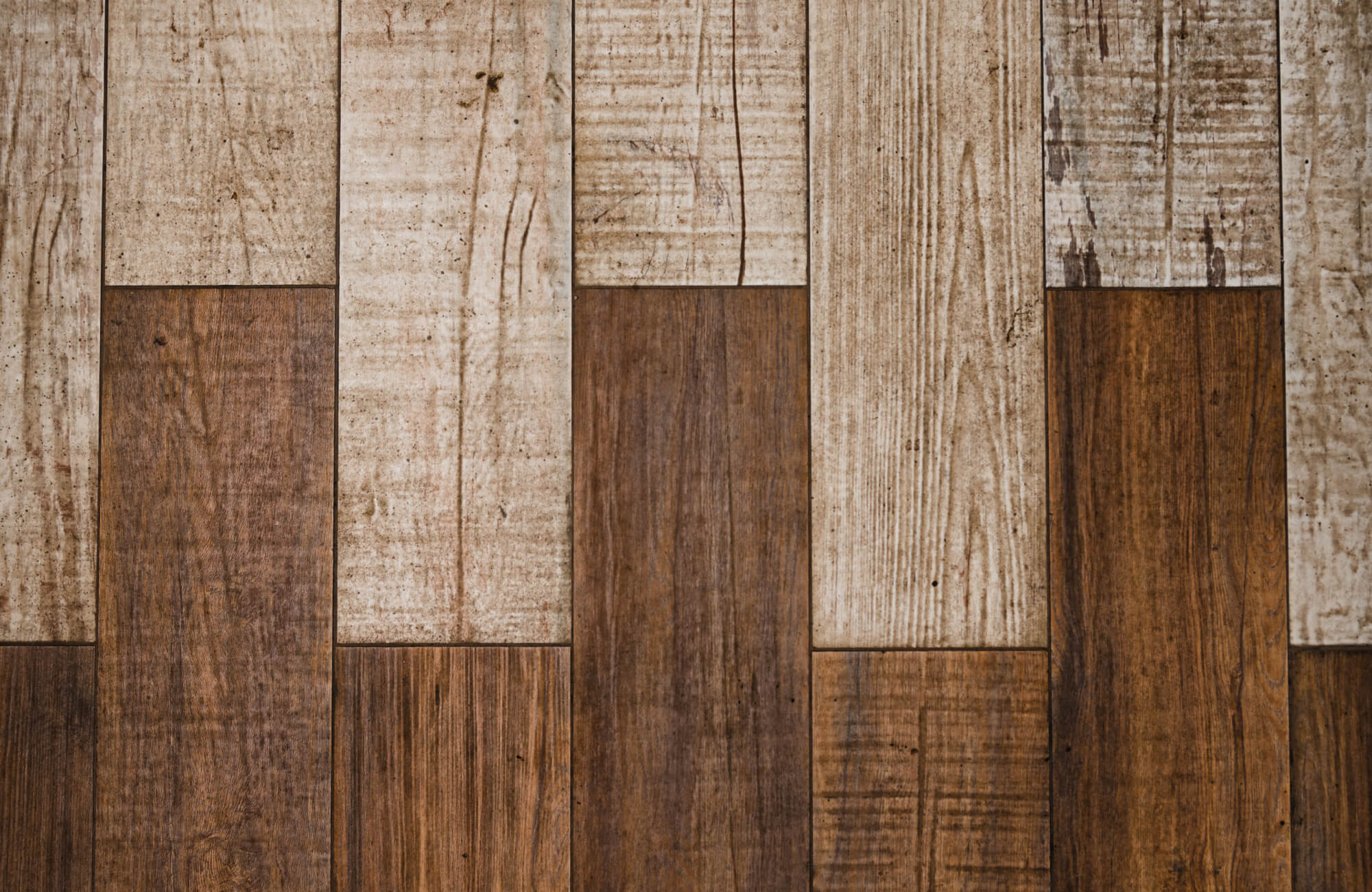Marble, a metamorphic rock celebrated for its elegance and durability, has been prized by civilizations for millennia. Its unique characteristics, from its striking veining patterns to its smooth, cool touch, have made it a sought-after material for both functional and aesthetic purposes.
In this article, we will examine the geological processes, chemical composition, physical properties, and cultural significance of marble, exploring how its mineral content and formation process define its structure and beauty. Additionally, we will look at how marble look tiles offer a practical and visually stunning alternative, capturing the essence of natural marble with modern innovations.

Geological Birth
Marble is born through a transformative geological process called metamorphism, where sedimentary rocks undergo intense heat and pressure to form a rock with unique characteristics. This transformation begins deep within the Earth's crust, where tectonic forces drive the recrystallization of mineral grains in sedimentary rocks. As temperatures rise and pressures intensify, the grains transform into larger, interlocking crystals, giving marble its distinctive structure and appearance.
Limestone and dolomite, the primary parent rocks of marble, are sedimentary rocks composed mostly of calcium carbonate (CaCO3). Limestone forms from marine organisms' skeletal remains, while dolomite develops through the magnesium-rich alteration of limestone.
Impurities like iron, clay, and organic matter influence marble's color and veining. These impurities, originating from parent rocks or introduced during metamorphism, interact with carbonate minerals to create a range of hues. For example, iron oxide produces red or yellow tones, while clay minerals contribute earthy shades.

Chemical Composition
Marble’s unique characteristics are largely defined by its chemical composition, with calcium carbonate (CaCO3) serving as its primary component, as discussed previously. This crystalline structure, primarily in the form of the mineral calcite, gives marble its strength and aesthetic appeal. In some cases, aragonite, a polymorph of calcium carbonate, may also be present, further contributing to its distinct properties.
The presence of impurities can also significantly influence marble's composition and appearance. For example, magnesium carbonate (MgCO3), commonly found in dolomite marble, enhances its resistance to weathering, making it more durable for outdoor applications. Additionally, iron oxides such as hematite can introduce vibrant hues, adding to its visual variety.
One of the marble’s key vulnerabilities is its reaction to acids, which can lead to damage when exposed to acidic environments or substances. Acid rain, for instance, accelerates the weathering process by reacting with calcium carbonate to form soluble compounds like calcium sulfate, eroding the marble’s surface over time. Similarly, acidic cleaning agents can etch the stone, leaving it dull and pitted.
To maintain marble’s integrity and preserve its beauty, it is crucial to use pH-neutral cleaners specifically designed for marble. Regular maintenance, combined with professional guidance from a trusted installer or manufacturer, can help mitigate potential damage and extend the lifespan of this timeless material.

Physical Properties
Apart from its chemical composition, marble’s physical properties, such as hardness, porosity, and thermal conductivity, further contribute to its versatility and enduring appeal in design and construction. Among these, hardness plays a significant role in determining its suitability for various applications. Influenced by the size and orientation of its mineral grains, marble’s hardness allows it to resist moderate scratching, though it remains susceptible to chipping or cracking under heavy impact. To minimize the risk of damage, using coasters, trivets, or cutting boards is recommended when placing sharp or hot objects on marble surfaces.
As a porous material, marble also has a natural tendency to absorb liquids, which can result in staining from substances like wine, oil, or acidic spills. To mitigate this, applying a high-quality penetrating sealer creates a protective barrier that significantly reduces the risk of staining. Regular resealing ensures that this protection remains effective over time, preserving marble’s pristine appearance.
Marble’s thermal conductivity is another noteworthy property. It efficiently conducts and retains heat, making it an excellent choice for flooring in colder climates or in spaces with radiant heating systems. However, this high conductivity can also make marble surfaces feel cool to the touch, which may be less desirable in certain settings. Incorporating area rugs, runners, or other floor coverings can help provide insulation and add warmth, enhancing comfort without compromising marble’s aesthetic.

Cultural and Historical Significance
Marble has been revered across cultures for its symbolic meaning, architectural versatility, and artistic excellence. From ancient civilizations using it to convey power and divinity to modern applications emphasizing sustainability and sophistication, marble’s enduring appeal reflects its timeless beauty and cultural importance.
The Greeks and Romans extensively used marble for iconic structures like the Parthenon and the Colosseum, showcasing its grandeur and versatility. They developed advanced quarrying techniques, enabling them to extract and shape large blocks for their architectural and sculptural masterpieces. Its durability, in particular, made it ideal for monumental works that have withstood centuries of weathering. Similarly, ancient Egyptians valued marble for constructing tombs, temples, and statues, associating it with power and divinity. Often combining marble with other stones, they created intricate symbolic designs, while its smooth surface preserved inscriptions and carvings.
In modern times, marble remains a cornerstone of architecture and design, appreciated for its ability to balance tradition and innovation. Advances in cutting and polishing technologies have made it accessible for both luxury and everyday applications, from flooring and countertops to wall cladding. This increased availability has reinforced marble's role as a symbol of elegance and refined beauty in contemporary interiors, seamlessly blending historical significance with modern artistry.
Marble’s symbolic association with purity, permanence, and luxury also contributes to its lasting appeal. Its intricate veining and diverse color palette evoke timeless beauty and exclusivity, making it a favored material for spaces meant to inspire awe and sophistication. Throughout history, its use in sacred temples, royal palaces, and monumental sculptures reflected power and immortality, while its application today continues to symbolize these enduring values.
Marble Look Tiles: A Modern Alternative
Marble look tiles are redefining luxury design by combining the timeless beauty of natural marble with modern practicality. Offering stunning aesthetics, exceptional durability, and cost-efficiency, they provide an accessible way to achieve elegant, marble-inspired spaces without the challenges of maintenance or expense.
Common Materials
Marble look tiles are crafted using durable materials like ceramic and porcelain, each offering distinct benefits for various applications. These materials effectively balance functionality and aesthetics, providing practical alternatives to natural marble.
Ceramic marble look tiles are widely favored for their affordability and versatility. They replicate the appearance of marble with a low-maintenance, scratch-resistant surface, making them suitable for light-use environments. Edward Martin’s Julianna 4x12 Glossy Ceramic Tile in Carrara exemplifies this, offering a classic Carrara marble aesthetic with a smooth, polished finish that works beautifully on vertical surfaces. Additionally, these tiles are lightweight, simplifying installation, and are available in numerous sizes, patterns, and finishes to suit diverse design preferences. Their compatibility with radiant heating systems also enhances comfort, particularly in colder climates.
On the other hand, porcelain marble look tiles are celebrated for their superior durability and water resistance. Their dense composition ensures lasting performance, even in moisture-prone areas such as kitchens, bathrooms, and outdoor spaces. For example, the Aniston 24x48 Matte Porcelain Tile in Calacatta Quarzite combines Calacatta marble's elegant appearance with exceptional durability, making it an ideal choice for high-use areas. Resistant to stains, fading, and thermal stress, these tiles retain their aesthetic appeal and structural integrity over time. The low porosity of porcelain also makes it hygienic, as it minimizes the risk of mold or bacteria growth, offering a cleaner and more sustainable surface option.
Design Innovations
Modern marble look tiles are crafted using advanced printing technologies, such as digital inkjet printing, to replicate the intricate veining and textures of natural marble with remarkable precision. These innovations enable a wide variety of styles, including seamless patterns and customizable designs, making it easier to achieve distinctive aesthetics in both interior and exterior spaces.
In addition to realistic appearances, manufacturers now offer marble look tiles in various finishes, such as matte, polished, or textured surfaces, catering to diverse design preferences and functional needs. Textured finishes, for instance, provide slip resistance, making them ideal for outdoor areas or wet environments.
Edward Martin’s Aniston 2x2 Matte Porcelain Mosaic Tile in Calacatta Quarzite is a prime example of design versatility, perfect for creating intricate patterns in bathrooms, backsplashes, and accent walls. This porcelain marble look collection also includes two large-format options, 48”x48” and 48”x110,” with the latter featuring a striking bookmatch design for a dramatic visual impact.
To help homeowners and designers visualize these options in their spaces, Edward Martin offers an innovative Augmented Reality (AR) tool. This cutting-edge feature allows you to virtually place marble look tiles in your home, ensuring you make the perfect choice for your design needs.
Final Thoughts
Marble’s beauty, durability, and cultural significance have made it a cornerstone of art, architecture, and design throughout history. Mainly composed of calcium carbonate, marble forms through the metamorphism of limestone and dolomite under heat and pressure, creating its distinct structure and veining. From ancient monuments to modern interiors, its versatility and symbolism continue to captivate, blending traditional grandeur with contemporary aesthetics. While natural marble requires maintenance, innovations like marble look tiles offer practical and sustainable alternatives, ensuring its legacy endures in diverse applications.
For expert guidance and design solutions, Edward Martin’s team specializes in creating stunning spaces using marble look tiles and other tile styles such as subway tiles, checkerboard tiles, and more. Whether you’re seeking classic elegance or modern functionality, our tailored services ensure every detail aligns with your vision, delivering exceptional results for residential and commercial projects alike.








